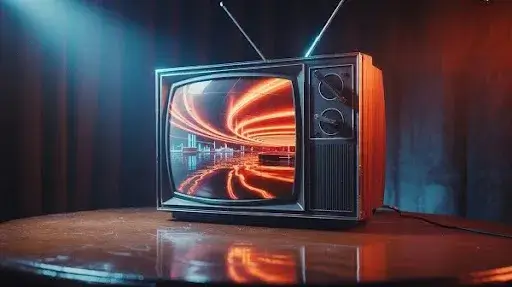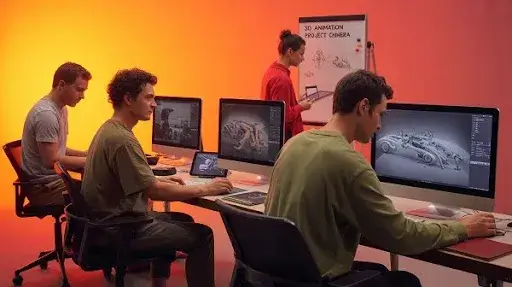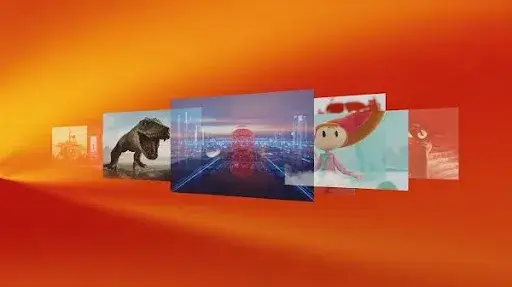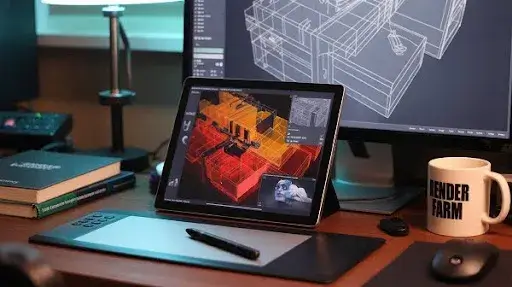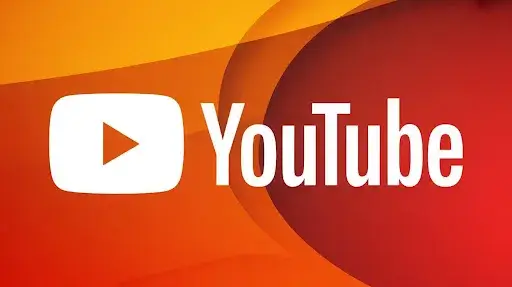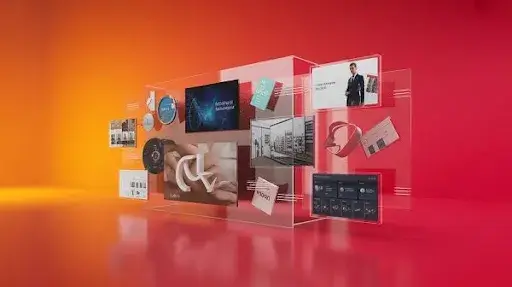Audiences don’t just watch anymore; they expect to be pulled in. Every shot has to carry weight, every detail has to feel alive. That’s where 3D animation in film and TV proves its value. It isn’t an afterthought tacked on at the end of production. It’s often the engine that moves the whole story.
Think about the movies topping the box office or the streaming shows people binge-watch all weekend. You’ll spot 3D in almost all of them. From subtle background work to full-on set pieces, it’s everywhere. Live-action shoots have limits; you can’t build a galaxy on a soundstage or level a city block on location.
The worldwide 3D animation market is expected to increase from approximately US$24.11 billion in 2024 to US$73.13 billion by 2034, achieving a CAGR of 11.7%.
With the right animators, though, you can create realistic environments and characters that audiences accept as part of the world on screen. That freedom to stretch reality without breaking it is what makes 3D so powerful today.
Why 3D Animation in Film and TV Matters
Adding Depth That 2D Can’t Match
Traditional 2D animation built the foundation, and it still has a place. But the level of depth viewers expect now comes from 3D animation in film and TV production. It brings whole spaces to life, down to skin textures, reflections in glass, or how the camera pans in a way that mimics the human eye.
A flame sweeping across a battlefield or a ship flying through thick clouds hits differently in 3D. It feels believable instead of symbolic.
Works Across Every Genre
One of the biggest strengths of 3D is its adaptability. It isn’t tied to one type of story. The same tools can create a stylized comedy, a grounded drama, or a science fiction epic. Each style of animation speaks its own language, but 3D fits all of them. An action film doesn’t look like a cartoon, but both can use 3D to pull people in.
Breaking Creative Barriers
Audiences aren’t asking what’s real or fake anymore. They just care if it feels right. With 3D, directors don’t have to stop at what’s physically possible. Flying cities, mythic beasts, futuristic skylines, they can all be built to a level of detail that convinces the eye. Sets and props have limits. 3D pushes past them.
Core Uses of 3D Animation in Film and TV
Special Effects That Steal the Spotlight
This is the space where 3D made its loudest entrance. Collapsing bridges, tidal waves, alien invasions; those moments define a film’s impact. High-quality 3D animation services let filmmakers stage massive spectacles without blowing up budgets or putting lives at risk.
When it’s done right, viewers aren’t thinking about the technique. They’re too busy reacting to the moment.
Opening Credits and Visual Branding
The opening minute of a movie or show shapes the entire mood. Studios use 3D for polished title sequences, spinning logos, and text treatments that stand out. They’re not filler. They’re the first signal of what kind of story the audience is stepping into.
Building Realistic Environments
Finding the perfect location is a headache. Sometimes the place doesn’t exist. A futuristic megacity, a ruined battlefield, or even a small town that needs to look twice as big, all of these can be built with 3D. Once you can create realistic environments and characters, the restrictions of real-world shooting disappear.
Characters That Carry Emotion
Explosions are great, but characters hold the story. A digital monster snarling, a lifelike copy of an actor, or even a cartoon mascot in a commercial, all rely on character-driven 3D animation. The magic comes in the subtleties: body movement, small facial shifts, timing of gestures. That’s how animated figures stop being pixels and start feeling like personalities.
The Benefits of Using 3D Animation in Film and TV Production
Reducing Costs Over Time
Live-action shoots drain budgets fast. Moving crews, securing permits, staging dangerous stunts, it all adds up. Once 3D assets are built, they can be tweaked or reused. Over multiple projects, the savings are huge.
Keeping Everyone Safe
There are things you simply shouldn’t shoot for real: car crashes, explosions, and natural disasters. With 3D animation in film and TV production, directors get complete control of the scene without risking actors or crew.
Fixing Mistakes After Shooting
In live-action, a missed shot means costly reshoots. Animation offers more flexibility. Lighting, camera angles, and motion can all be refined later. That’s saved plenty of films from falling apart in editing.
Knowing the Limitations
3D isn’t effortless. It takes time, skilled teams, and strong hardware. Some viewers won’t consciously notice the realism, but that doesn’t mean it isn’t worth the work. Subtle touches often decide how polished a project feels.
The Process of Creating 3D Animation for Film and TV
Pre-Production
Every strong project starts with planning. Writers outline the vision. Artists sketch designs. Storyboards map the flow of scenes. Characters and settings are developed here, laying the foundation for everything that follows.
Production
This is where assets get built. Artists model and texture objects, then rig them for animation. Performances take shape as animators sync dialogue, gestures, and expressions. It’s the closest step to “shooting” the film.
Post-Production
Once the sequences are animated, editors and effects teams polish them. Lighting, sound, renders, and grading shape the final look. This is the stage that separates a rough draft from a finished cinematic piece.
Distribution
The last step is packaging the work so it runs smoothly on every platform, theaters, streaming services, or TV networks. A studio that understands these standards ensures the final product looks good anywhere.
Choosing the Perfect 3D Animation Studio for Your Project
Finding the perfect 3D animation studio for your project comes down to fit, not flash. It’s about who understands your goals and can deliver consistently.
Matching Experience to Style
Studios specialize in different looks. Some focus on realism, others excel in stylized animation. Knowing your target tone helps you pick a team that already works in that style of animation.
Team Strength and Scalability
Project size matters. A boutique studio can nail a short ad but might struggle with a feature-length project. A massive team might overshoot the budget for a smaller one. Matching project scope with team capacity keeps things on track.
Costs and Transparency
Studios charge differently. Some lure clients with low bids but miss deadlines or quality marks. Others charge more but stick to promises. The safest path is transparency: clear pricing, schedules, and deliverables.
A Partner, Not Just a Vendor
Strong collaborations come from studios that act like creative partners. They understand emotion, story beats, and marketing goals. That’s the approach we take at Prolific Studio, working side by side to build stories, not just scenes.
How 3D Animation Shapes Different Styles of Film and TV
Every production has its own flavor. The visuals have to follow that mood, and that’s where 3D comes in strong. It bends with the tone of the project instead of forcing one look on every story. Some projects need a layer of realism, some thrive on exaggeration, and others survive only because 3D can pull off what’s impossible to film on set.
Drama and Realism
In dramas, 3D doesn’t ask for attention. It sits in the background, quietly patching gaps. A bare street is filled with life, a skyline looks stormy and heavy, or a small set suddenly feels much bigger than it really is. These touches don’t steal the spotlight; they make the space believable so the performances can stay center stage.
Comedy and Stylized Looks
Comedies go the opposite way. Realism takes a back seat, and exaggeration drives. A goofy mascot can barrel across the frame with cartoon timing, or a gag can land simply because physics bent for half a second. Even a 3D title bouncing around can set a playful tone. The goal isn’t to fool the eye; it’s to get a laugh.
Sci-Fi and Fantasy
This is 3D’s home turf. Starships, glowing alien cities, dragons flying over mountains, they live or die on digital artistry. Without high-quality 3D, most of these ideas wouldn’t leave the page. Here, the effects don’t decorate the story; they are the story.
Documentaries and Education
It might surprise people, but nonfiction projects lean on 3D too. Historians rebuild places that no longer exist. Educators break down complicated science into something you can watch. A recreated battlefield, a fly-through of an ancient ruin, or a molecular breakdown of DNA, these are things raw footage alone can’t give viewers.
The Technical Side of 3D Animation
Audiences only see the finished piece, but the craft behind it is fragile. Skip a step and the whole illusion falls apart.
Modeling and Texturing
Everything starts with shapes, characters, props, environments. Once built, textures cover them: skin, brick, glass, steel. Done right, textures blend so naturally you don’t notice them. Done wrong, they pull you right out of the scene.
Lighting and Rendering
Light makes or breaks the image. Shadows and reflections tell our brain what feels real. Rendering takes all those choices and spits out frames, sometimes after hours of grinding for just a few seconds of footage.
Rigging and Motion
Models don’t move until they get a skeleton. Rigging gives that structure. Then animators step in to breathe life, a hesitant pause before a smile, the weight of a heavy footstep. That’s the moment a puppet becomes a character.
Sound and Atmosphere
Visuals hook first, but sound keeps people locked in. The crunch of boots, the hiss of gas, the echo of a cavern: these small details connect fantasy with reality. Without them, even flawless images feel hollow.
Why Studios Depend on 3D
It’s not only for big battles or space operas. Studios use 3D for practical reasons too. A set can be reshaped without rebuilding. Weather doesn’t wreck continuity. Digital assets don’t age or break down. And because content has to work across screens worldwide, 3D lets teams adapt quickly without starting over. For today’s productions, it isn’t an add-on. It’s standard practice.
Challenges Along the Way
The trade-offs are real. Rendering heavy scenes can chew through months. Hardware and software upgrades keep draining budgets. And the pipeline needs so many specialized roles that if one person is missing, a rigger, a texture artist, everything slows. Ironically, the better 3D looks, the less anyone notices. But when it’s missing, the gap screams at the audience.
Still, studios commit to it. The payoff is worth the strain: films and shows that feel complete, believable, and big enough to pull us in.
Frequently Asked Questions
What is 3D animation in this context?
It’s computer-generated imagery used to build characters, locations, and effects with depth that 2D can’t match.
Is there a set process for creating 3D animation?
Typically, yes, storyboarding, then modeling, rigging, animating, rendering, editing, and sound. The final step is distribution.
Do small projects use it too?
Yes. While blockbusters rely on it heavily, smaller productions use 3D for things like branding elements, subtle fixes, or modest effects.
Can 3D look real?
With skilled artists, it can mimic movement, expression, and surface detail to the point where audiences don’t question it.
How do I pick a studio?
Check their past projects, see if they’ve worked on your type of content, and ask how open they are about costs and timelines.
Final Words
3D has shifted from being flashy to being fundamental. It grounds stories, creates spaces that don’t exist, and adds depth to projects across every genre.
At Prolific Studio, one of the best animation studios in Denver, we don’t just make effects that look pretty; we weave them into the story itself. Our team builds high-quality 3D animation that supports the emotion of the scene, whether your project leans on realistic environments and characters or requires wild, impossible worlds.
The end goal is simple: keep your audience inside the story. That’s the standard we aim for with every project.
Related Articles:

